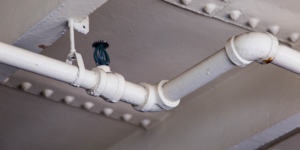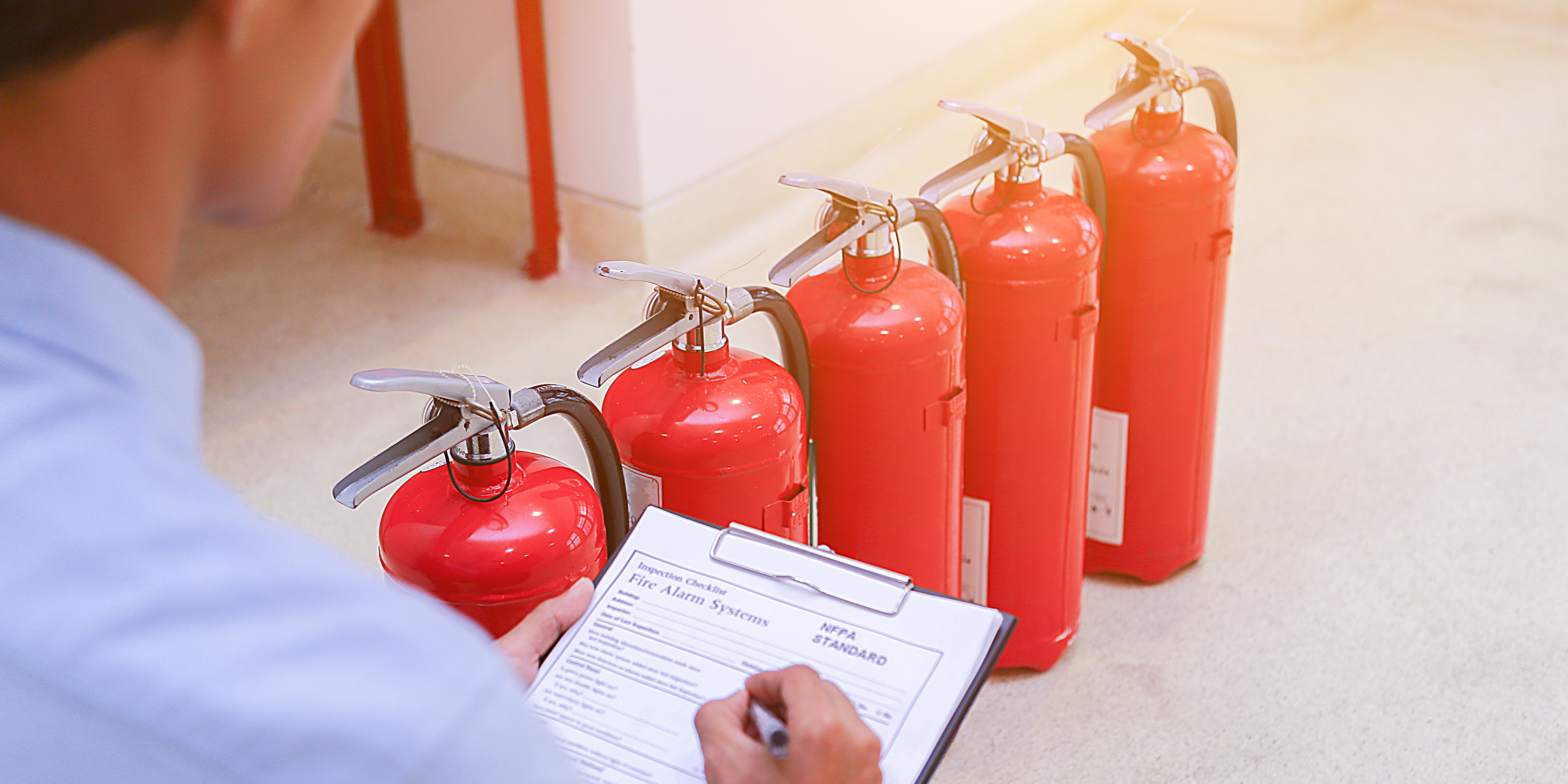Every structure needs a working fire sprinkler system to safeguard lives and property. These systems need regular inspections to stay functional and compliant. We will discuss the importance of regular fire sprinkler inspections, the codes and regulations governing them, the inspection process, common issues found during inspections, the consequences of non-compliance, and code compliance tips.
Importance of Regular Inspections
Fire sprinkler systems must be inspected regularly to ensure building safety and code compliance. These checks help avert tragedies and reduce fire damage. Regular inspections detect system flaws early on, making them crucial. Early detection of leaks, blocked pipes, and malfunctioning sprinkler heads allows for repairs before they become more costly.
Regular inspections also ensure your fire sprinkler system meets local fire requirements. Fire rules are revised to reflect new safety requirements and technologies. Monitoring these changes with frequent inspections lets you update your system and make any necessary upgrades. Regular inspections also show your dedication to occupant safety. Preventing fires and saving lives demonstrates you care about them.
You protect your property and minimize your insurance premiums with frequent inspections. Because well-maintained fire protection systems reduce risk, insurance companies offer discounts.
Understanding Fire Sprinkler Codes and Regulations
In fire crises, fire sprinklers save lives and buildings. Compliance with fire sprinkler laws and regulations is crucial to these systems’ functioning. Fire sprinkler installation, maintenance, and inspection must fulfill local standards under these rules.
Each municipality has its own fire sprinkler system codes. Building owners, facility managers, contractors, and inspectors must grasp these standards to comply.
Fire sprinkler codes encompass system design, pipe sizing, water supply, alarm signaling devices, valve configurations, hydraulic calculations, seismic considerations, and more. They set minimum fire sprinkler installation and maintenance criteria.

Compliance with these standards and regulations can be difficult without knowledge or skill. It’s best to hire fire protection engineers or trained inspectors who know local codes.
These rules are updated as technology and safety measures change. Compliance requires being abreast of changes.
Following these laws and regulations during installation and maintenance will improve fire sprinkler system effectiveness and building occupant safety.
The Inspection Process: What to Expect
Life-saving fire sprinkler systems must be inspected to ensure safety and efficacy. Knowing what to expect when scheduling an inspection helps you prepare and streamline the process.
It’s important to remember that licensed specialists perform fire sprinkler inspections and know the standards and regulations. They will inspect your pipes, valves, alarms, and control panels.
The technician will check each sprinkler head for blockages and damage throughout the inspection. They will also check all valve labels and emergency access.
They may also test system water flow by actuating valves or applying pressure. This helps identify water supply faults or congested pipes that could affect sprinkler operation.
Inspectors will also verify sprinkler clearance compliance with local fire codes. Storage items or things near a sprinkler head may impair fire suppression.
Inspectors will produce a full report after their assessment. This report should recommend repairs or maintenance to bring your system up to code.
Understand a fire sprinkler inspection to better prepare yourself and your property for this critical review. Regular inspections protect residents and avoid costly fire damage. Maintaining your fire protection system requires proactiveness!
Items on a Fire Sprinkler Inspection Checklist
Fire sprinkler inspections require a thorough checklist. This checklist assures code compliance and safety by thoroughly inspecting all components and systems.
What should a fire sprinkler inspection checklist include? Consider these crucial points:
- Visual Inspection: The inspector will inspect sprinkler heads, pipes, fittings, and valves visually. Note any damage or corrosion for repair or replacement.
- Water Flow Testing: Measures system water pressure and flow. For fire emergencies, it ensures enough water.
- Alarm Testing: The inspector will manually activate or simulate an alarm circumstance to test the alarms.
- To ensure emergency operation, test all control valves.
- Spare parts inventory: For speedy repairs or replacements, spare parts must be readily available.
- Maintenance records, training logs, and other system maintenance and testing paperwork will be reviewed by inspectors.
- Validating that all installed equipment complies with current regulatory codes and standards like NFPA should be part of this checklist.
Include these items on your fire sprinkler inspection checklist to keep your system in good shape and comply with requirements.
Common Issues Found During Inspections
Fire sprinkler examinations often reveal faults that endanger system performance and safety. Addressing these issues quickly and ensuring code compliance requires early detection.
Sprinkler head obstructions are prevalent during inspections. In a fire, storage boxes, hanging decorations, and dust might block water flow. For optimal sprinkler operation, provide room around each head.
Pipe and fitting corrosion is another common issue. These components can rust or deteriorate from moisture, chemicals, or mechanical stress. Professional technicians should rapidly repair leaks, cracks, and weakened connections.
Poor maintenance and obsolete equipment are other prevalent inspection issues. Local regulations mandate fire sprinkler system inspection and testing. Not following maintenance schedules or using old technology can lead to non-compliance penalties and safety issues.
Inspectors often find insufficient building coverage. Any coverage gaps must be addressed immediately, whether due to changes made without updating the sprinkler system design or installation problems.
Comprehensive fire sprinkler inspections reveal these frequent faults and those specific to each property. Businesses and property owners can eliminate hazards and ensure code compliance for maximum fire protection with regular evaluations.
Consequences of Non-Compliance
Building safety depends on fire sprinkler code compliance. Failure to follow regulations can harm property and endanger life.
Non-compliance increases fire risk. Failure to maintain fire sprinkler systems can cause a small fire to grow into a major calamity.
Additionally, legal liabilities may result. According to rules, building owners who neglect to maintain their fire sprinkler systems may be sued after an incident. This can lead to large fines and criminal charges if negligence is established.
Non-compliance risks insurance coverage. Insurance policies often need frequent inspections and maintenance. A building owner may be refused claims or charged more if they cannot prove their fire sprinkler system was properly inspected and maintained.

Non-compliant structures may also have trouble getting renovation or expansion permits from regulatory agencies. Such approvals sometimes need fire safety code compliance.
When addressing non-compliance sanctions, consider reputational damage. In this digital age, fire protection incidents can ruin a business’s brand forever.
No prudent building owner can afford to violate fire sprinkler inspection standards, which endanger lives, legal issues, insurance coverage, future development plans, and reputation.
Tips for Maintaining Code Compliance
- Updated: Fire sprinkler codes and regulations must be kept current. To guarantee system safety, codes are revised constantly, so be informed of any changes.
- Regular Inspections: Hire professionals to inspect your fire sprinkler system regularly to verify compliance with codes and regulations. Annual inspections are recommended, although more regular checks may be needed depending on your area.
- Good Documentation: Record system inspections, maintenance, repairs, and modifications. This documentation will help you prove code compliance and be useful later.
- Training and Education: Train your fire sprinkler system maintenance crew. Make sure they know the codes and maintenance procedures.
- Address Issues Quickly: Address issues found during inspections or routine maintenance checks. Ignoring or postponing repairs might cause noncompliance and fire protection system failure.
- Work with Professionals: Hire fire sprinkler system experts for installation, inspection, testing, maintenance, and repairs. They have the skills to keep your system code compliant.
Remember that property owners and managers must be diligent and aggressive to preserve code compliance! These suggestions can help you keep your fire sprinkler system in compliance with all requirements, protecting lives and property in a fire emergency.
Conclusion
Code compliance and building safety require regular fire sprinkler inspections. Follow fire sprinkler codes to reduce fire risk and safeguard lives and property.
Knowing what to expect during an inspection is crucial. From visual inspections to functional tests, a fire sprinkler system checklist should cover everything. This will reveal urgent issues.
Inspections often find blocked or damaged sprinkler heads, impediments surrounding sprinklers, corrosion in pipes or fittings, low water pressure, and malfunctioning alarm systems. These concerns must be addressed quickly to ensure your fire protection system works.
Fire sprinkler code violations can be dangerous. It endangers people and exposes building owners to legal liability and fines. You may reduce these risks and maintain code compliance by proactively inspecting and fixing errors.
Fire sprinkler system maintenance should be routine to maintain code compliance. Regular inspections by experienced professionals and correct maintenance paperwork are required.
